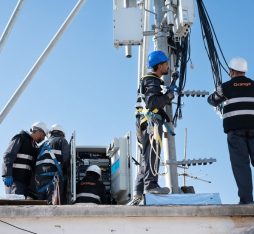Orange and Vodafone have announced a partnership to share Open RAN networks in a rural area of Romania. Open RAN networks are already a reality in several markets on an operational or experimental basis, particularly in Europe and North America. However, this shared implementation is a first in Europe.
With the disaggregation of hardware and software, Open RAN provides carriers with a shared configuration, flexibility and the ability to differentiate.
Open RAN, a Three-Dimensional (R-)Evolution
The open access network architecture, Open RAN, is based on three key elements, points out Atoosa Hatefi, Director of Innovation in Radio & Environment at Orange. “The first distinctive feature of an Open RAN network is the opening of its interfaces, including Open Fronthaul where the link is made between radio transmitters (Open Radio Units) and the processors that host the digital radio processing (Open Distributed Unit). With this opening comes the possibility of setting up multi-supplier configurations, in contrast to where the traditional RAN model limits the carrier to a black box issued by a single supplier. With Open RAN, the range of potential suppliers is opened up, leading to more competition and, by extension, more innovation. The second element is virtualization, which allows the hardware and software parts of the network to be separated. This paves the way for sharing generic hardware between network functions, resulting in a streamlined use of servers. Finally, with Open RAN, there is also the possibility of using AI-native architecture. Feeding back information about how the network functions, as well as analyzing it through Machine Learning algorithms, is a key way of optimizing the RAN in many aspects including dynamic management of traffic, quality of service and energy consumption.”
Sharing and Differentiation
Making this extra intelligence a reality is a next-generation software program, the RAN Intelligent Controller, or RIC. Within an Open RAN network, the RIC organizes and manages several functions, some of which are “near-real-time” with an action time of less than one second (for example, to optimize the allocation of radio resources to a mobile user).
The Open RAN sharing initiative with Vodafone is linked to several challenges for Orange. Firstly, rolling out an open access network is an opportunity to bring greater diversity to its network of suppliers in Europe, as well as to capitalize on the benefits of the Open RAN model. Sharing this Open RAN network gives both carriers the opportunity to increase their flexibility in setting up new radio sites or upgrading existing sites, while minimizing their costs and energy footprint through network sharing. “In a typical RAN sharing configuration, carriers must opt for the same suppliers and align their software choices,” adds Atoosa Hatefi. “With Open RAN sharing, hardware and software are disaggregated, making it possible to choose different software versions, and thus provide more flexibility and a greater ability for carriers to differentiate themselves.” All carriers can configure their network according to their needs and their customers’ needs.
The Open RAN Ecosystem Is Underway
The first Orange and Vodafone shared Open RAN sites will be rolled out in 2023, following a phase of laboratory tests that are currently taking place and yielding promising initial results. A central aim of this rollout will be to demonstrate that Open RAN is as mature as a traditional RAN in terms of functionality and performance.
Orange is strongly committed to the Open RAN architecture, which is a blueprint for future networks. The Group, along with four other European carriers who signed a Memorandum of Understanding (MoU) in 2021, is working to develop the Open RAN ecosystem, and prioritize the requirements and specifications of this model in a European context. At the Mobile World Congress 2023, the five operators (Orange, Vodafone, Deutsche Telekom, Telefónica and Telecom Italia) are publishing a new white paper on the key issues of Open RAN. In particular, it discusses the advances made in terms of technology maturity, security and energy efficiency.








